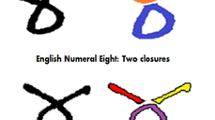Abstract
This paper presents a statistical framework for recognising 2D shapes which are represented as an arrangement of curves or strokes. The approach is a hierarchical one which mixes geometric and symbolic information in a three-layer architecture. Each curve primitive is represented using a point-distribution model which describes how its shape varies over a set of training data. We assign stroke labels to the primitives and these indicate to which class they belong. Shapes are decomposed into an arrangement of primitives and the global shape representation has two components. The first of these is a second point distribution model that is used to represent the geometric arrangement of the curve centre-points. The second component is a string of stroke labels that represents the symbolic arrangement of strokes. Hence each shape can be represented by a set of centre-point deformation parameters and a dictionary of permissible stroke label configurations. The hierarchy is a two-level architecture in which the curve models reside at the nonterminal lower level of the tree. The top level represents the curve arrangements allowed by the dictionary of permissible stroke combinations. The aim in recognition is to minimise the cross entropy between the probability distributions for geometric alignment errors and curve label errors. We show how the stroke parameters, shape-alignment parameters and stroke labels may be recovered by applying the expectation maximization EM algorithm to the utility measure. We apply the resulting shape-recognition method to Arabic character recognition.
Access this chapter
Tax calculation will be finalised at checkout
Purchases are for personal use only
Preview
Unable to display preview. Download preview PDF.
Similar content being viewed by others
References
Cootes, T., Taylor, C., Cooper, D., Graham, J.: Active shape models-their training and application. Computer Vision and Image Understanding 61(1), 38–59 (1995)
Belongie, S., Malik, J., Puzicha, J.: Shape matching and object recognition using shape contexts. IEEE Transactions on PAMI 24(24), 509–522 (2002)
Marr, D.C.: Vision: a computational investigation into the human representation and processing of visual information. Freeman, San Francisco (1982)
Jordan, M., Jacobs, R.: Hierarchical mixtures of experts and the em algorithm. Neural Computation 6, 181–214 (1994)
Cootes, T., Taylor, C.: A mixture models for representing shape variation. Image and Vision Computing 17, 403–409 (1999)
Cootes, T., Taylor, C.: Combining point distribution models with shape models based on finite element analysis. Image and Vision Computing 13(5), 403–409 (1995)
Al-Shaher, A.A., Hancock, E.R.: Linear shape recognition with mixtures of point distribution models. In: SSPR 2002, Windsor, Canada, pp. 205–215 (2002)
Dempster, A., Laird, N., Rubin, D.: Maximum likelihood from incomplete data via the em algorithm. Journal of Royal Statistical Soc. Ser. 39, 1–38 (1977)
Hancock, E.R., Kittler, J.: Discrete relaxation. Pattern Recognition 23(7), 711–733 (1990)
Author information
Authors and Affiliations
Editor information
Editors and Affiliations
Rights and permissions
Copyright information
© 2003 Springer-Verlag Berlin Heidelberg
About this paper
Cite this paper
Shaher, A.A., Hancock, E.R. (2003). Arabic Character Recognition Using Structural Shape Decomposition. In: Petkov, N., Westenberg, M.A. (eds) Computer Analysis of Images and Patterns. CAIP 2003. Lecture Notes in Computer Science, vol 2756. Springer, Berlin, Heidelberg. https://doi.org/10.1007/978-3-540-45179-2_59
Download citation
DOI: https://doi.org/10.1007/978-3-540-45179-2_59
Publisher Name: Springer, Berlin, Heidelberg
Print ISBN: 978-3-540-40730-0
Online ISBN: 978-3-540-45179-2
eBook Packages: Springer Book Archive




